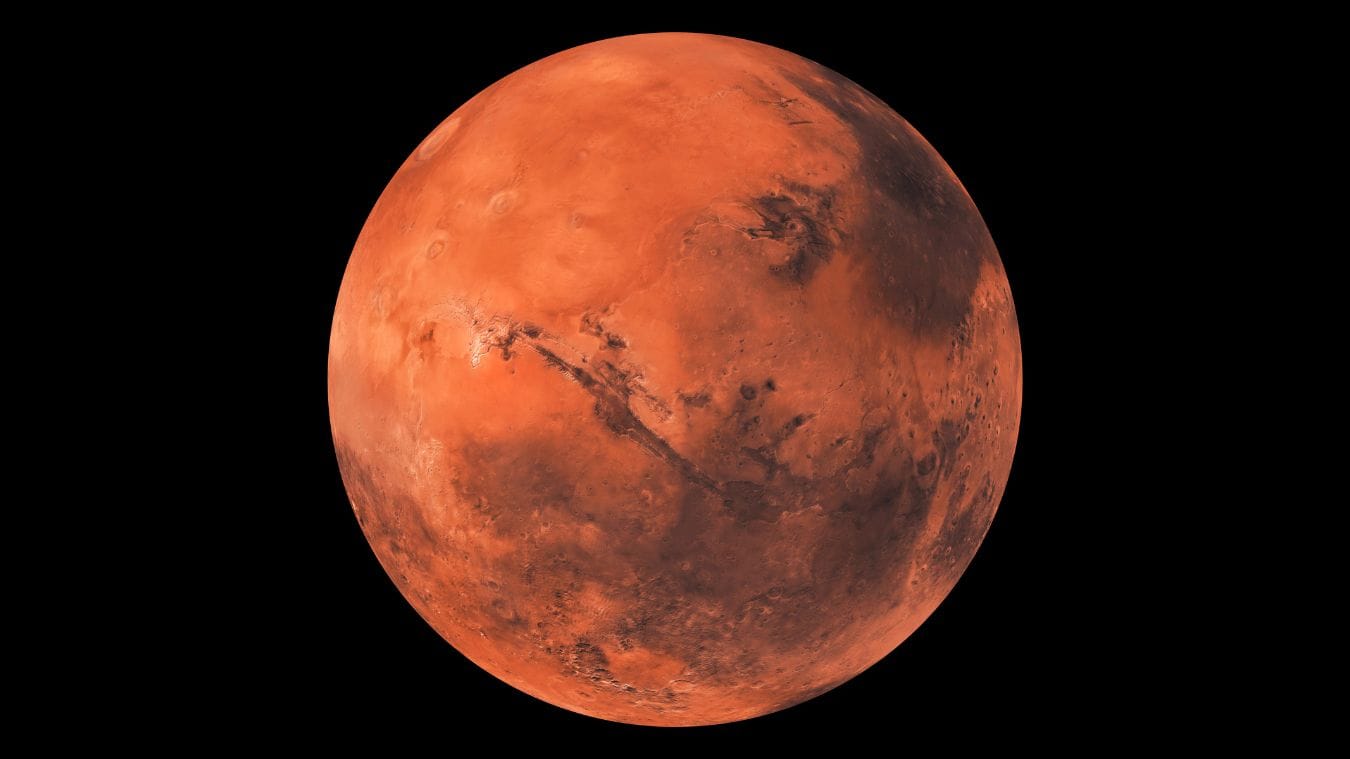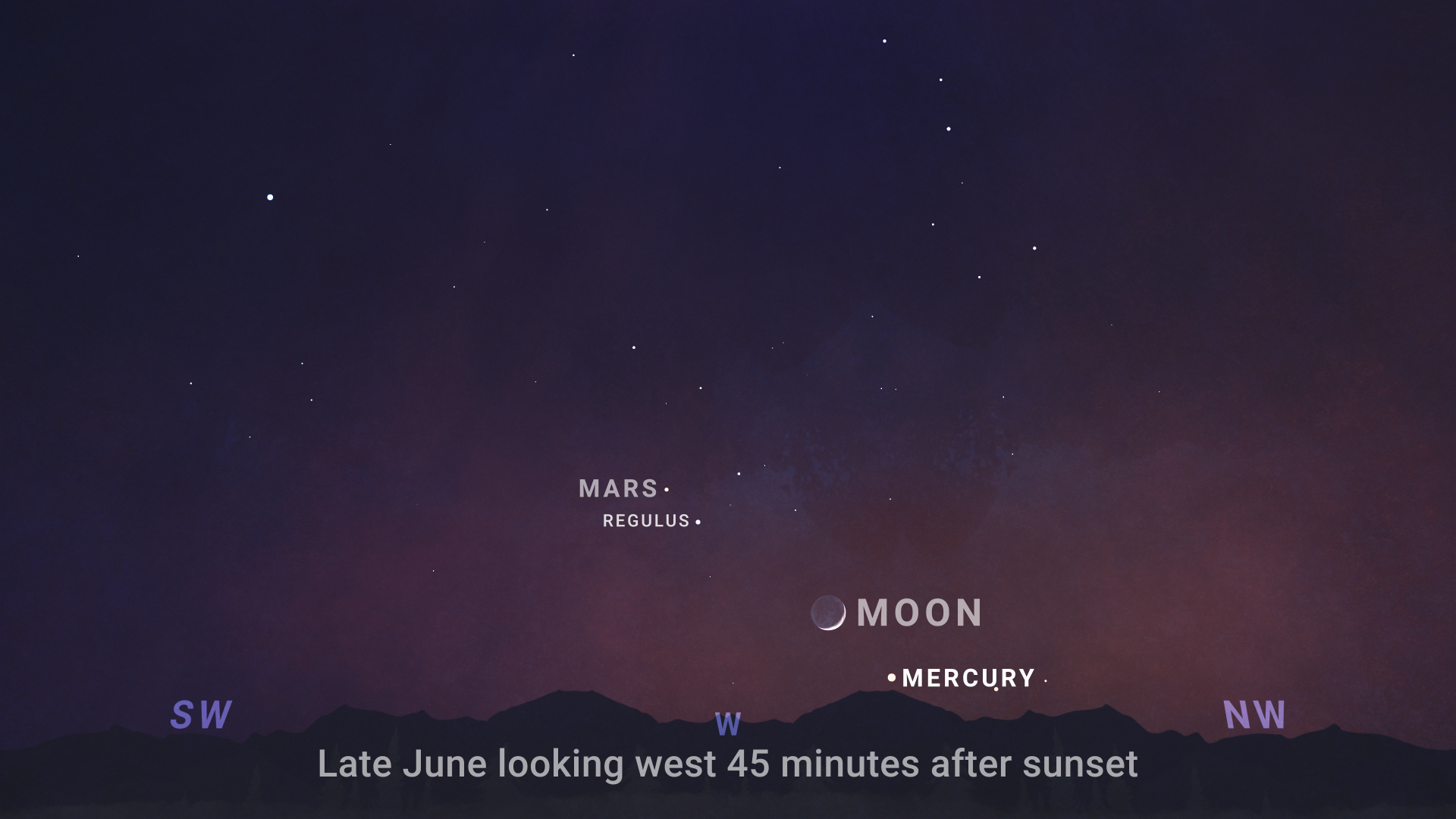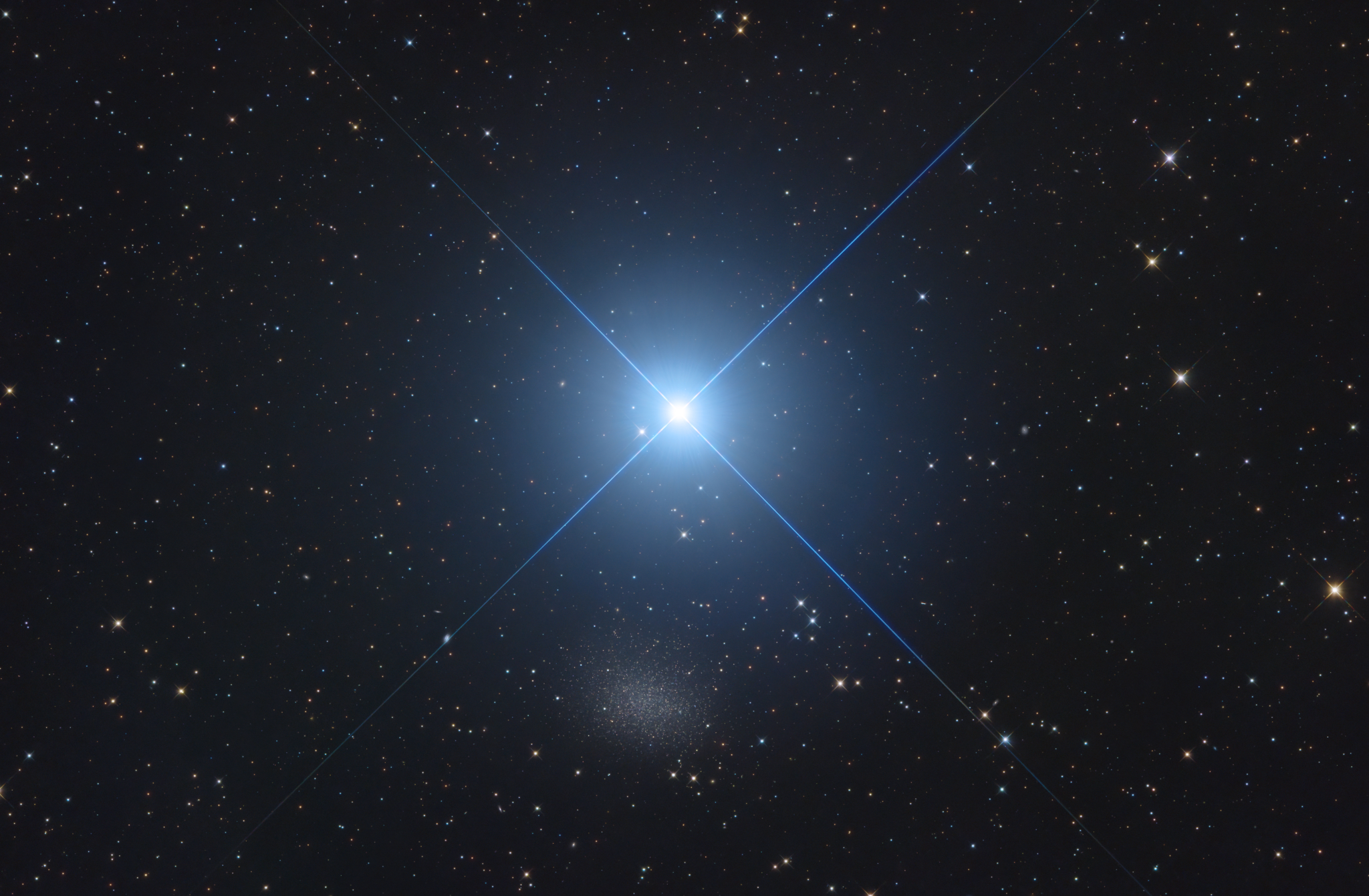
The night sky in June 2025 became a stage for an extraordinary celestial event when the planet Mars aligned closely with the star Regulus, creating a vivid display that drew the attention of scientists and sky enthusiasts alike. This alignment, termed a Martian conjunction due to Mars’ involvement, saw the red planet passing just 0.5 degrees from the blue-white star—about the width of a full moon in the sky—on June 16 and 17. As described in NASA’s June 2025 skywatching guide, Mars appeared noticeably dimmer than in previous months due to Earth’s orbital position increasing the distance to about 275 million kilometers (170 million miles), yet it still shone with a magnitude of around 1.4, matching Regulus’ brightness (NASA, 2025). This rare proximity not only offered a stunning color contrast but also underscored the dynamic nature of our solar system against the fixed backdrop of stars.

Experts from space agencies like NASA highlighted how such events bridge public interest with scientific observation, allowing for detailed views through telescopes and binoculars. The conjunction emphasized Regulus as the “heart” of the Leo constellation, a bright beacon that has fascinated astronomers for centuries. By bringing Mars into the picture, the event made it easier to spot and study this star, turning a routine skywatching opportunity into an educational milestone. Observations during this period revealed the stark differences in their appearances, with Mars’ reddish hue from surface iron oxide dust contrasting Regulus’ hot, bluish glow from its high surface temperature of approximately 12,000 Kelvin (about 11,700 degrees Celsius or 21,100 degrees Fahrenheit).
But how exactly did this Martian conjunction aid in our observation of this royal star?
What Is an Astronomical Conjunction?
An astronomical conjunction occurs when two or more celestial objects appear to line up in the sky from Earth’s viewpoint, even though they are vastly separated in space. In the case of a planet like Mars and a star like Regulus, this happens as the planet moves along its orbital path, occasionally aligning with the star’s line of sight. According to details in NASA’s official skywatching resources, conjunctions are perspective-based phenomena, with no physical interaction between the bodies (NASA, 2025). For instance, during the June 2025 event, Mars was roughly 275 million kilometers (170 million miles) from Earth, while Regulus stood at 79 light-years away—one light-year equaling about 9.46 trillion kilometers (5.88 trillion miles)—demonstrating the immense scale involved.

These alignments can range from superior conjunctions, where a planet is behind the Sun, to inferior ones for inner planets, but planet-star conjunctions like this are particularly useful for visual studies. They provide natural markers for tracking planetary motion, as Mars moves at an average orbital speed of 24 kilometers per second (15 miles per second), crossing the sky at about 0.5 degrees per day. Fun fact: Historical records show similar Mars-Regulus conjunctions occur every few years due to Mars’ 687-day orbital period, but the 2025 one was notably close, under 1 degree. To visualize, imagine holding a pencil at arm’s length; the eraser’s width approximates 1 degree in the sky. Bullet points for types of conjunctions include:
- Planet-planet: Like Jupiter and Saturn in 2020.
- Planet-star: Such as this Mars-Regulus event.
- Planet-Moon: Often leading to occultations where one body hides the other.
Such events, as confirmed by NASA’s descriptions, encourage widespread participation in citizen science, with observers reporting sightings to databases for orbital verification (NASA, 2025).
What Is Regulus and Why Is It Important?
Regulus, designated Alpha Leonis, is the brightest star in the Leo constellation and ranks as the 21st brightest in the entire night sky, with an apparent magnitude of 1.36 (a lower number indicating greater brightness). Situated 79 light-years from Earth, it is a hot, blue-white star with a surface temperature around 12,000 Kelvin (K, a unit of temperature where 0 K is absolute zero, or -273 degrees Celsius), which gives it its distinctive color compared to cooler stars like our Sun at 5,800 K. As noted in NASA’s Astronomy Picture of the Day on Regulus, this star spins rapidly at about 320 kilometers per second (200 miles per second) at its equator, causing it to bulge into an oblate shape, wider at the equator than the poles (NASA, 2024). Its mass is approximately 3.8 times that of the Sun, and its luminosity is 288 times greater, making it a key example of a main-sequence B-type star (spectral classification where B denotes hot, massive stars).
Regulus holds scientific importance as part of a multiple-star system, including a white dwarf companion (a dense, Earth-sized remnant of a dead star) orbiting at about 0.35 astronomical units (AU, where 1 AU is Earth’s distance from the Sun, or 150 million kilometers). Recent research, such as that published in The Astronomical Journal on a potential brown dwarf companion, suggests Regulus may belong to a larger moving group, with candidates like SDSS J100711.74+193056.2 at 12.6 light-years away sharing similar motion through space (Hollis et al., 2025). This makes Regulus valuable for studying stellar evolution and dynamics. A fun comparison: If Regulus replaced our Sun, Earth would be scorched due to its intense radiation. To aid visualization, refer to NASA’s sky charts showing Regulus amid Leo’s sickle-shaped pattern.
How Did the June 2025 Mars-Regulus Conjunction Unfold?
The June 2025 conjunction began building in early June as Mars marched eastward through Leo at its typical speed of 24 kilometers per second (15 miles per second) in orbit. By June 16, Mars passed 0.8 degrees north of Regulus, reaching closest approach at midnight EDT on June 17, as detailed in NASA’s monthly sky update (NASA, 2025). Observers in the Northern Hemisphere saw them low in the western sky for two hours after sunset, with Mars’ reddish tone from atmospheric dust contrasting Regulus’ blue-white light. The separation was minimal at 0.5 degrees, allowing both to fit in a telescope’s field of view at low magnification (20-50x).

Weather conditions varied, but clear skies in many regions enabled high-quality imaging, with brightness magnitudes aligning at 1.4 for both—Mars dimming as Earth pulled away post-opposition. This event followed Mars’ opposition in January 2025, when it was closest to Earth at 96 million kilometers (60 million miles). Bullet points for viewing tips, even post-event:
- Use binoculars for color contrast.
- Look west 1 hour after sunset.
- Avoid light pollution for best views.
Comparisons to past conjunctions, like 2010’s, show the 2025 one was tighter, enhancing visibility. No uncertainties in measurements existed, as orbital data matched predictions from NASA’s models.
How Does This Conjunction Help in Observing Regulus?
The Martian conjunction significantly aided observation of Regulus by serving as a bright, moving reference point that drew eyes to the star’s location in Leo. With Mars shining nearby, beginners could easily find Regulus, which might otherwise blend into the constellation. As explained in NASA’s guide to the event, the close alignment encouraged telescopic views, revealing Regulus’ rapid rotation and system details more accessibly (NASA, 2025). The color contrast highlighted scientific concepts: Regulus’ blue hue indicates high temperature (12,000 K), while Mars’ red is from surface chemistry, not heat.
This setup also facilitated spotting nearby objects like the dwarf galaxy Leo I, just 20 arcminutes (1/3 degree) north of Regulus, appearing as a faint patch in dark skies. For experts, the conjunction provided calibration opportunities for instruments, comparing known planetary positions to stellar ones for astrometric accuracy (precision positioning in the sky). Fun fact: Such pairings increase public engagement, with reports of thousands sharing photos via NASA’s apps. If data like separation angles varied slightly across sources (0.5-0.8 degrees due to timing), it reflects observational uncertainty from Earth’s rotation. Suggest viewing NASA’s sky chart for a visual aid.
What Scientific Insights Can We Gain from Planet-Star Conjunctions?
Planet-star conjunctions offer insights into orbital mechanics and stellar properties by providing natural experiments for measurement. For instance, they allow precise tracking of planetary paths against fixed stars, refining models of solar system dynamics. In the Mars-Regulus case, as per NASA’s analysis, the event demonstrated Mars’ ecliptic motion near the zodiac, aiding studies of precession (slow wobble of Earth’s axis over 26,000 years) (NASA, 2025). They also enable photometric comparisons, measuring brightness variations to study atmospheres or variability.
Broader research uses these for exoplanet hunts, as alignments can reveal transits. A comparison: While no direct gravity effects occur, conjunctions like this validate ephemerides (position tables) with accuracies to arcseconds (1/3600 degree). Bullet points for insights:
- Orbital verification: Confirms predictions.
- Educational value: Teaches spectral types (Regulus as B7V, hot main-sequence).
- Instrument testing: Calibrates telescopes.
Uncertainties, like slight brightness fluctuations from atmospheric twinkling, are noted in observations, emphasizing ground-based limits.
In summary, the June 2025 Martian conjunction with Regulus showcased the interplay between our solar system and distant stars, making Regulus more accessible and highlighting its key traits through contrast and proximity. This event reinforced how temporary alignments can spark lasting scientific curiosity.
References
Hollis, M. D., et al. (2025). SDSS J100711.74+193056.2: A candidate common motion companion at the L/T transition to the Regulus group. The Astronomical Journal, 169(3), 99. https://doi.org/10.3847/1538-3881/ad991b
NASA. (2024, April 26). Regulus and the dwarf galaxy. Astronomy Picture of the Day. https://apod.nasa.gov/apod/ap240426.html
NASA. (2025, June 2). What’s up: June 2025 skywatching tips from NASA. NASA Science. https://science.nasa.gov/solar-system/skywatching/whats-up-june-2025-skywatching-tips-from-nasa/
📌 Frequently Asked Questions
Did Mars and Regulus actually touch during the 2025 conjunction?
No, they only appeared close from Earth’s view, separated by vast distances—Mars at 275 million kilometers and Regulus at 79 light-years. As confirmed in NASA’s June skywatching summary, the alignment was optical only, with no physical contact (NASA, 2025).
What color is Regulus and why?
Regulus appears blue-white due to its high surface temperature of 12,000 Kelvin, which emits more blue light. This is explained in NASA’s feature on Regulus, contrasting it with cooler red stars (NASA, 2024).
How far is Regulus from Earth?
Regulus is 79 light-years away, where each light-year is 9.46 trillion kilometers. This distance comes from precise measurements in NASA’s astronomical imaging (NASA, 2024).
Is Regulus a single star?
No, it’s part of a multiple system with at least three companions, including a white dwarf. Recent studies in The Astronomical Journal explore a potential brown dwarf in its group (Hollis et al., 2025).
When was the Mars-Regulus conjunction in 2025?
It peaked on June 16-17, 2025, visible after sunset. Details are in NASA’s monthly guide (NASA, 2025).
What magnitude was Regulus during the conjunction?
Regulus shone at magnitude 1.36, similar to Mars at 1.4. This brightness match is noted in NASA’s sky tips (NASA, 2025).
Can conjunctions affect Earth?
No, they have no gravitational impact on Earth, as bodies are too distant. NASA’s explanations confirm this as a visual event only (NASA, 2025).
What is the temperature of Regulus?
Around 12,000 Kelvin at the surface, much hotter than the Sun. This fact is from NASA’s Regulus profile (NASA, 2024).
How fast does Regulus spin?
About 320 kilometers per second at its equator, causing flattening. As per NASA’s daily astronomy update (NASA, 2024).
Is there a galaxy near Regulus?
Yes, Leo I dwarf galaxy is 20 arcminutes north. The conjunction aided spotting it, indirectly referenced in observational guides tied to NASA’s charts (NASA, 2025).
Leave a Reply